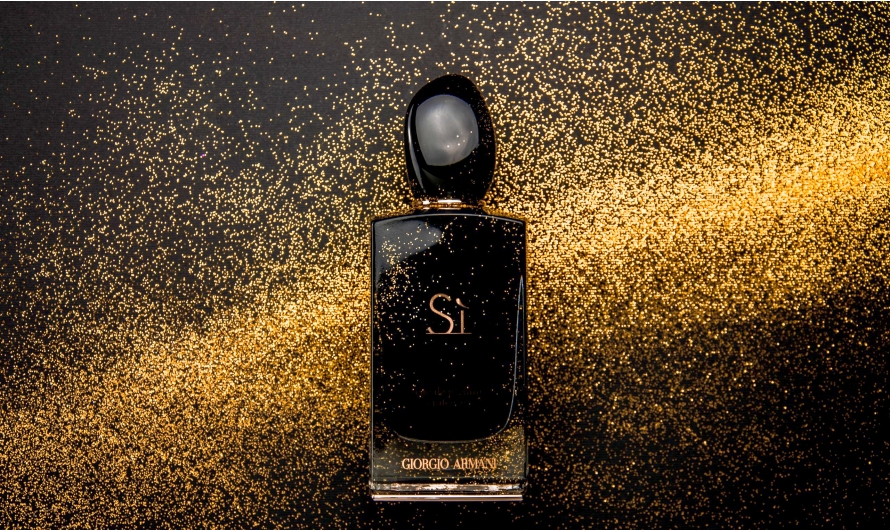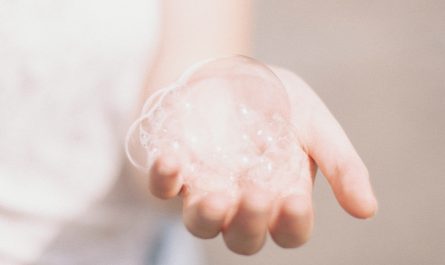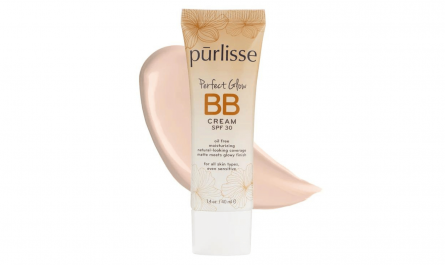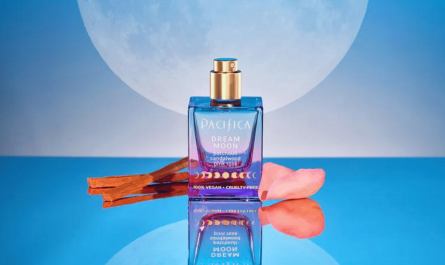Perfume is more than just a way to smell good. It’s a form of self-expression, a mood enhancer, a memory trigger, and a personal statement. Perfume can make you feel confident, elegant, sexy, or cozy, depending on what you choose to wear.
But perfumes are not designed to last forever. They are delicate products that can lose their quality and longevity over time if not stored and cared for properly. You don’t want your expensive perfume to go bad or lose its scent before you finish it.
In this article, we’ll show you how to make your own perfume at home using simple ingredients and tools. We’ll also explain the science and art of perfume making, and how to customize your perfume to suit your personality and occasion.
The Science of Perfume Making
The first step to make your own perfume is to understand the science of perfume making. Here are some of the main concepts and terms you need to know:
What are the main components of perfume?
Perfume is composed of three main components: fragrance oils or essential oils, alcohol or carrier oil, and water or glycerin.
Fragrance oils or essential oils
Fragrance oils or essential oils are the substances that give perfume its scent. They are extracted from natural sources, such as flowers, fruits, herbs, spices, woods, resins, etc., or synthesized from chemical compounds. They are classified into different categories, such as floral, fruity, woody, spicy, oriental, etc., depending on their aroma.
Alcohol or carrier oil
Alcohol or carrier oil is the substance that dilutes and disperses the fragrance oils or essential oils. It also helps preserve and stabilize the perfume. Alcohol is usually used for spray-on perfumes, while carrier oil is usually used for roll-on perfumes. Alcohol can be either pure ethanol or denatured alcohol (ethanol mixed with other substances to make it unfit for drinking). Carrier oil can be any vegetable oil that is odorless and non-greasy, such as jojoba oil, almond oil, grapeseed oil, etc.
Water or glycerin
Water or glycerin is the substance that adjusts the concentration and viscosity of the perfume. It also helps moisturize and soften the skin. Water is usually used for spray-on perfumes, while glycerin is usually used for roll-on perfumes. Water can be either distilled water or filtered water (water that has been purified by removing impurities). Glycerin can be either vegetable glycerin or synthetic glycerin (a clear liquid that is derived from plant oils or petroleum).
What are the main categories of fragrance?
Fragrance is the term used to describe the overall smell of a perfume. It is composed of different notes and families that create a unique aroma.
Notes
Notes are the individual scents that make up a fragrance. They are classified into three types: top notes, middle notes, and base notes.
- Top notes are the first scents that you smell when you apply a perfume. They are usually light, fresh, and volatile (they evaporate quickly). They provide the initial impression of a perfume and set the tone for the rest of the fragrance.
- Middle notes are the scents that emerge after the top notes fade away. They are usually floral, fruity, or spicy, and last longer than the top notes. They form the heart of a perfume and give it its character and personality.
- Base notes are the scents that linger after the middle notes disappear. They are usually woody, musky, or oriental, and last the longest of all the notes. They form the foundation of a perfume and give it its depth and longevity.
Families
- Families are the groups of notes that share similar characteristics and create a harmonious aroma. They are classified into seven main types: floral, fruity, woody, spicy, oriental, citrus, and green.
- Floral family is the most popular and diverse family of fragrance. It consists of notes that are derived from flowers, such as rose, jasmine, lily, lavender, etc. Floral fragrances are usually feminine, romantic, and elegant.
- Fruity family is the second most popular family of fragrance. It consists of notes that are derived from fruits, such as apple, peach, berry, mango, etc. Fruity fragrances are usually sweet, juicy, and playful.
- Woody family is the third most popular family of fragrance. It consists of notes that are derived from woods, such as cedar, sandalwood, pine, etc. Woody fragrances are usually warm, cozy, and earthy.
- Spicy family is the fourth most popular family of fragrance. It consists of notes that are derived from spices, such as cinnamon, clove, pepper, etc. Spicy fragrances are usually hot, exotic, and stimulating.
- Oriental family is the fifth most popular family of fragrance. It consists of notes that are derived from oriental ingredients, such as vanilla, amber, musk, etc. Oriental fragrances are usually rich, sensual, and mysterious.
- Citrus family is the sixth most popular family of fragrance. It consists of notes that are derived from citrus fruits, such as lemon, orange, grapefruit, etc. Citrus fragrances are usually fresh, bright, and refreshing.
- Green family is the seventh most popular family of fragrance. It consists of notes that are derived from green plants or herbs, such as grass, mint, basil, etc. Green fragrances are usually crisp, clean, and natural.
What are the main stages of perfume making?
Perfume making is the process of creating a fragrance by blending different notes and families together. It involves four main stages: blending, aging, filtering, and bottling.
Blending
Blending is the stage where you mix your fragrance oils or essential oils with your alcohol or carrier oil and your water or glycerin. You can use a measuring cup or a pipette to measure your ingredients and a glass bottle or a beaker to mix them together. You can also use a perfume calculator or a perfume wheel to help you create your own recipe or formula.
Aging
- Aging is the stage where you let your perfume sit for a period of time to allow the ingredients to blend and mature. You can store your perfume in a dark, cool, and dry place, such as a closet or a drawer. You can also shake your perfume occasionally to help the ingredients mix well. The aging time can vary depending on your recipe and preference, but it usually ranges from a few days to a few weeks.
Filtering
Filtering is the stage where you remove any impurities or sediments from your perfume. You can use a coffee filter or a cheesecloth to strain your perfume into a clean glass bottle or a beaker. You can also use a funnel or a pipette to transfer your perfume without spilling.
Bottling
Bottling is the final stage where you store your perfume in a suitable container for use or display. You can use any glass bottle that has a cap or a spray nozzle, such as an old perfume bottle, a travel-sized bottle, or a rollerball. You can also decorate your bottle with labels, stickers, ribbons, etc. to make it more attractive and personalized.
The Art of Perfume Making
The second step to make your own perfume is to explore the art of perfume making. Here are some of the main tips and tricks you need to know:
How to find your inspiration and style
The first tip on how to explore the art of perfume making is to find your inspiration and style. Here are some ways to do that:
Explore different scents and sources
The best way to find your inspiration and style is to explore different scents and sources that appeal to you. You can smell different perfumes at a perfume store or online, and see what notes and families you like or dislike. You can also smell different natural sources, such as flowers, fruits, herbs, spices, woods, etc., and see what aromas you find pleasant or unpleasant.
Experiment with different combinations and proportions
Another way to find your inspiration and style is to experiment with different combinations and proportions of scents that interest you. You can mix different notes and families together, and see what blends create a unique and harmonious aroma. You can also adjust the proportions of each ingredient, and see what effects they have on the intensity and longevity of your perfume.
How to customize your perfume to suit your personality and occasion
The second tip on how to explore the art of perfume making is to customize your perfume to suit your personality and occasion. Here are some ways to do that:
Choose a theme or a mood for your perfume
The best way to customize your perfume is to choose a theme or a mood for your perfume that reflects your personality and occasion. For example, you can choose a theme or a mood such as romantic, playful, elegant, cozy, etc., and select scents that match that theme or mood. You can also name your perfume after your theme or mood, such as Love Potion, Summer Breeze, Midnight Magic, etc.
Adjust the intensity and longevity of your perfume
Another way to customize your perfume is to adjust the intensity and longevity of your perfume according to your preference and occasion. For example, you can adjust the intensity of your perfume by changing the concentration of fragrance oils or essential oils in your recipe. A higher concentration will result in a stronger scent, while a lower concentration will result in a softer scent. You can also adjust the longevity of your perfume by changing the ratio of alcohol or carrier oil and water or glycerin in your recipe. A higher ratio of alcohol or carrier oil will result in a longer-lasting scent, while a lower ratio of water or glycerin will result in a shorter-lasting scent.
How to create your own signature scent or formula perfume
The third tip on how to explore the art of perfume making is to create your own signature scent or formula perfume. Here are some ways to do that:
Use a basic recipe or a template as a guide
The easiest way to create your own signature scent or formula perfume is to use a basic recipe or a template as a guide. You can find many basic recipes or templates online or in books, and follow them step by step. You can also modify them slightly to suit your taste and style.
Add your own twist or variation to make it unique
The most creative way to create your own signature scent or formula perfume is to add your own twist or variation to make it unique. You can add some extra notes or families that are not in the basic recipe or template, and see how they change the overall fragrance. You can also experiment with some unusual or exotic ingredients that are not commonly used in perfumes, and see how they add some flair and personality to your perfume.
Conclusion
Perfume making is a fascinating and rewarding hobby that combines science and art. By making your own perfume, you can express yourself, save money, and have fun. You can also create your own signature scent or formula perfume that reflects your personality and style.
In this article, we’ve shown you how to make your own perfume at home using simple ingredients and tools. We’ve also explained the science and art of perfume making, and how to customize your perfume to suit your preferences and occasions.
We hope you’ve enjoyed reading this article and learned something new about perfume making. If you’re interested in trying some of the perfume making methods we’ve mentioned, you can find them online or at your local craft store.
Now it’s your turn to unleash your creativity and make your own perfume!
FAQs
Here are some frequently asked questions about perfume making:
- Q: What are the best fragrance oils or essential oils to use for perfume making?
- A: The best fragrance oils or essential oils to use for perfume making are the ones that you like and enjoy. There is no definitive answer to this question, as different people have different preferences and tastes. However, some general tips are to use high-quality, pure, and natural fragrance oils or essential oils that are suitable for cosmetic use; to use a variety of notes and families to create a balanced and complex fragrance; and to use scents that complement each other and do not clash.
- Q: What are the best alcohol or carrier oil and water or glycerin to use for perfume making?
- A: The best alcohol or carrier oil and water or glycerin to use for perfume making are the ones that are odorless, non-greasy, and non-toxic. Some general tips are to use ethanol (pure alcohol) or denatured alcohol (ethanol mixed with other substances) for spray-on perfumes; to use vegetable oils such as jojoba oil, almond oil, grapeseed oil, etc., for roll-on perfumes; to use distilled water or filtered water for spray-on perfumes; and to use vegetable glycerin or synthetic glycerin for roll-on perfumes.
- Q: How much perfume can I make with one recipe?
- A: The amount of perfume you can make with one recipe depends on the size of your container and the concentration of your ingredients. A typical recipe for spray-on perfume uses 20% fragrance oils or essential oils, 80% alcohol, and a few drops of water; while a typical recipe for roll-on perfume uses 10% fragrance oils or essential oils, 90% carrier oil, and a few drops of glycerin. For example, if you use a 50 mL bottle for spray-on perfume, you will need 10 mL of fragrance oils or essential oils, 40 mL of alcohol, and a few drops of water; while if you use a 10 mL rollerball for roll-on perfume, you will need 1 mL of fragrance oils or essential oils




